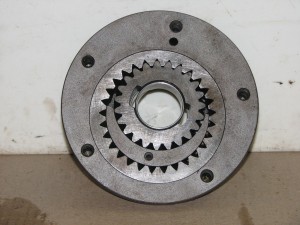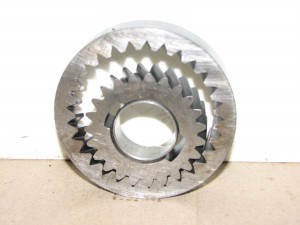Here is an apparent nugget of good hope for consumers, especially with mysterious problems such as a transmission problem. Technical Service Bulletins are actually an advisory issued by a manufacturer for use by dealership service departments. Most TSBs are released during the first year that a vehicle is offered or the year following a redesign, we observed – in order to address areas that might have been overlooked when designing the car.
These bulletins differ from recalls in that they are not considered safety or emissions issues and they usually apply only when your vehicle is in its warranty period (whereas a recall is “open” until the work has been performed). TSBs frequently address a recurring problem and include illustrated instructions for repair, a list of the parts needed, the warranty status and the labor charge.
If a problem addressed in a TSB is particularly widespread, the manufacturer may decide to send out “Owner Notification” letters – in this case, the manufacturer has a good idea of which vehicles (by VIN) will experience the problem.
Service bulletin content varies in severity – you’ll find TSBs that cover blown engines and clunking transmissions alongside those that offer remedies for inoperable cigarette lighters and brake dysfunctions. And some TSBs merely outline updated service procedures and troubleshooting strategies, or offer hints for installing something as simple as a trailer hitch.
And, of course, the best thing about finding a TSB that seems to cover a persistent problem in your vehicle is that dealerships will make the repair for free, provided that
* Your vehicle is under warranty;
* Your service adviser and/or technicians are able to confirm that the problem exists.
Another TSB issue that is not to be taken lightly. Even if your vehicle is within the warranty period, the dealership is not going to do anything about it, if technicians cannot verify the concern…. The manufacturer pays for the repair, not the dealership, and the dealership has to treat the manufacturer like a customer…. The service writer can’t write up an invoice with just the TSB number and expect the manufacturer to pay for the procedure. The manufacturer wants to know that the car is legitimately broken.
Rather than going into the dealer with the TSB number in hand, it is more effective to come to the dealer with a complete description of your vehicle’s particular problem – what are the exact symptoms, and when and where did/do they occur. He offered this example: Suppose you have a cold-running concern with your transmission. Don’t drive the vehicle into the dealer before work in the morning and expect technicians to be able to duplicate the problem – the vehicle will be warm. Instead, bring the vehicle into the dealer the evening before and let it sit overnight. In short, someone in the service department has to be able to duplicate the problem, and the TSB number and a brief description of the problem won’t always do it.
If the technicians and your service writer seem to be having trouble resolving a problem with your vehicle and you’ve already given them the most complete description possible, then you might say politely, “Someone suggested that this TSB might cover it,” or, “Did anyone try this TSB?” A customer who makes an effort to be educated (that is, provides a full description of the problem and demonstrates a history of regularly maintaining the vehicle) and to treat service writers (and technicians) with respect is more likely to find resolution for her vehicle’s problems.
A further option, is to arrange a meeting with the service manager and then, calmly discuss the matter (bring applicable service receipts). Usually, service managers will respond favorably to customers who ask, “Could you help me out?”, rather than ranting. The service manager and writers always have a manufacturer’s representative (a field technician) whom they can contact. You might want to suggest that they try this, if they haven’t already.
Making ties with a service department over several years may have its benefits when something goes wrong with your car after it is out of warranty. If you know that a particular problem is covered by a TSB and have a reputation of spending money with the dealership, the service writer might be willing to write off all or part of the repair cost.
A word of advice on TSBs. One can get on the dealer’s good side early by having every single oil change, tune-up, etc., done by them for the first two years you own the car. Now they have a loyal customer for life, despite higher prices for certain services.
Not everyone fits the model of the faithful customer and not every dealership service adviser is happy to discuss your concerns about your vehicle with you. Maybe, in spite of your best efforts, the service department claims they have been unable to find a problem. Perhaps, your vehicle has long since passed its warranty period, and you use an independent mechanic to save money. Or perhaps, you do all the work on your vehicle.
In these situations, owners might find it helpful to see the full text of the technical service bulletins that cover particular vehicle problems.
It is possible to get the full text of a TSB but you have to pay for this information. The National Highway Traffic Safety Administration’s Web site has a search authorization form, on which you enter the information you gathered from the TSB summaries (as exactly as you can). A NHTSA employee makes copies from their microfiche collection of bulletins and mails them to you.
While people who take their cars to dealerships for service may be able to get by with the information available at the NHTSA, this often does not suffice for the large group of people who use independent shops. Independent mechanics may not have access to the full text of every TSB issued by a manufacturer unless they subscribe to sites like Snap On ‘Shop Key’ or Alldata and Mitchell ‘OnDemand5′.
If you happen to own a Hyundai, you have one further option when you need repair information – you can visit the service Web site run by the manufacturer. The site is accessible to the public and all information is free.
The Hyundai site focuses on shop manuals with troubleshooting guides and diagnostic procedures. You cannot search for specific TSBs, but you can search by the year, model and the area of concern (transmissions, suspension, etc.) – and yes, the Web site has shop manuals for every Hyundai ever sold in the U.S. I found the website to have clean, easy-to-read tables with a list of problems, probable causes and remedies. It does take a bit of work to find the information you’re seeking, but we think owners will find this site useful.
Hyundai has targeted this Web site toward all of its owners, whether they visit the service department, use an independent mechanic or do the work themselves. They wanted to assist their customers in diagnosing and repairing Hyundai products, whether they’re doing it themselves or taking it to the dealership. Hyundai wanted to knock down some the obstacles and hurdles of being a smaller franchise.
Although the availability of this information would seem to increase the likelihood that owners might attempt to make their own repairs, actually, Hyundai hopes the Web site will strengthen owners’ relations with service departments. Whenever you educate the customer … the intelligent owner will realize how sophisticated and complicated cars have become and decide that they need to go to a repair shop.
Hyundai has tried to ensure that its service information will be as current as possible, doing nightly uploads.
I can’t say everything in this guide will come true. If you have a problem and suspect a TSB has been sent out, don’t be shy, ask me in the comment box below. If we can help, it is our pleasure. GotTransmissions.com @ 866-320-1182.












